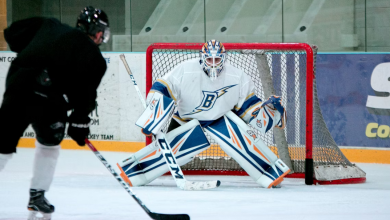NHL offers players 50-50 split of fans’ souls

I’m as sick of talking about this lockout, these negotiations, and this PR battle between the owners and the players as much as you are. But I feel like I need to clear something up here, at least one of the parts I understand.
So you’ve probably heard by now of the league’s latest proposal that offers a 50-50 split of all HRR, or “hockey-related revenue.” Great. As you may have noticed, the league also decided to release the full details of its offer. It wasn’t leaked, and nobody had to pry it out of them. They wanted everybody to know how generous and reasonable they are. You can see it here on NHL.com.
So let’s take a look at the second clause, which, conveniently for the NHL, is also one of the smallest in terms of wording. So small, in fact, that I can post the full thing here without getting yelled at by my editor:
“2. HRR Accounting:
• Current HRR Accounting subject to mutual clarification of existing interpretations and settlements.”
Yup, that’s it. Just one bullet point’s worth of juicy information. Very hard to understand and doesn’t really look like a proper sentence. Even Microsoft Word puts the green line under the entire phrase as if in agreement with my assessment of the lack of grammar. Either that or MS Word can somehow smell bull****. But it just kind of looks like they decided to sneak it in there like “No big deal guys, you have more important stuff to look at, like all these crazy numbers and terms that make no sense to you peasants.”
What does that little nugget mean, exactly? Basically, put into simpler terms, it means that the league will reconfigure what constitutes as HRR, and therefore how much money the players can earn, prior to the start of the season.
So that’s pretty sketchy. They’re sort of offering the players more money than they originally did, but not really. To explain, let’s use the classic example of a pie. Originally, the league offered the players 43% of the pie. We’ll call it an apple pie for no particular reason. So the players didn’t like that, and now it’s as if the league is trying to pull a fast one by offering them half of the pie, but the pie is now smaller.
Smaller how so, you ask? Well, with the ability to determine exactly what constitutes as HRR, there’s no limit to the amount of money the league can withhold from the players. It leaves everything open for debate. Bridgestone tire ads (you’re welcome for the free plug) on the side boards? Not really a part of hockey, just tires. $22 hot dog? Not really a part of hockey, just food. Tickets for a hockey game? Not really a part of hockey, people are just sitting in the arena which just so happens to be showing a hockey game. A bit of exaggeration, but they can, and will, find ways to reduce the amount of things that qualify as HRR.
Continuing with the pie analogy, it’s like saying, “sure, we’ll give you exactly half of a pie, but we’re withholding some of the ingredients in the baking process and will be creating our own separate pie with the leftover components for only ourselves that you won’t be able to touch. Also your half of the pie is lemon.”
The league might as well have stayed with their offer of 43% of revenue for the players, but have generously offered them 100% of revenue generated from unicorns and leprechauns.

It’s a PR move. The entire lockout has turned into a PR battle and the fat cats took the lead with their latest maneuver. “NHL offers fair 50-50 split” you’ll see in the headlines. “NHL really wants to get deal done and have hockey, greedy players want more money” will be the rhetoric across social media and amongst the fans. Because that’s what the media, as well as the fans, tends to do: pick out the one hot button. Never mind the fact that the proposed deal is only set to last all of six years.
Yeah, six years. Sound familiar? That has “fourth lockout in 24 years” written all over it. When struggling teams like Phoenix and Florida continue to fail and bleed money (which they will), the NHL is just going to ask for more money. So why should the players accept a deal in which they’re basically getting screwed because the owners made a lot of mistakes (i.e. Atlanta; Dennis Wideman’s contract), only to be screwed even further a few years down the road? Why should fans want that? I don’t want to be sitting here on my couch in six years, whining about the same BS and vigorously trying to wash myself of the betrayal.
If all that wasn’t enough, just take a look at the name the NHL dubbed for its offer: “NHL PROPOSAL TO SAVE 82-GAME SEASON”. Oh, please forgive me, NHL! I didn’t realize the heroics you were putting forth to valiantly save the season! How dare those knaves over at the NHLPA plot against you and strike down your totally fair and balanced offer!
I guess my point is that don’t think for a second that either side is willing to budge even a little bit and that they’ll do anything to come out on top. They can spin the numbers however they want, they can reword the stipulations of contract restrictions with their fancy lawyer talk, but each side’s arguments will remain the same. Get ready for a long offseason.

